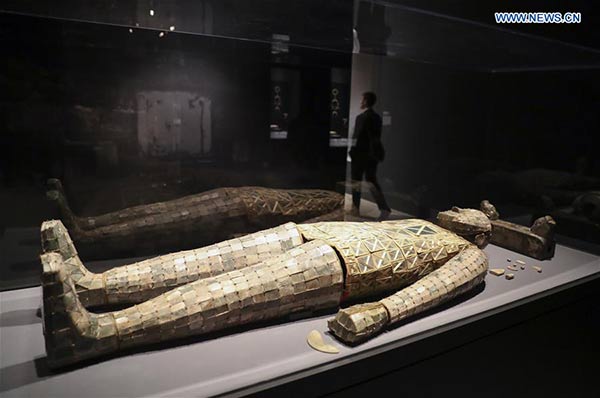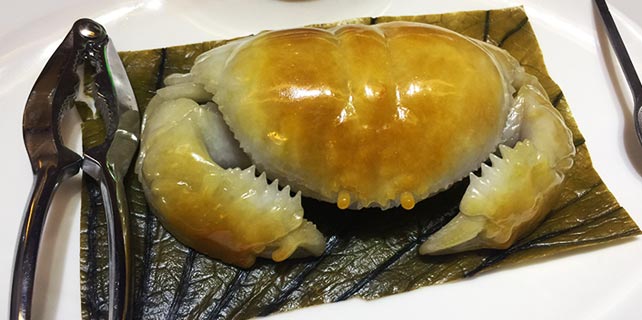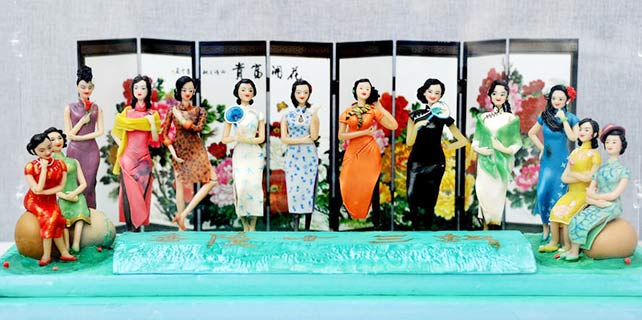Met will display Qin, Han treasures
 |
|
Photo taken on March 27, 2017 shows Burial Ensemble of Dou Wan, including jade with gold wire, pillow of gilt bronze and jade, and jade orifice plugs during a media preview of the Exhibition of Civilization of the Qin and Han Dynasties (221 B.C.-220 A.D.) in The Metropolitan Museum of Art, New York, the United States. [Photo/Xinhua] |
The Metropolitan Museum of Art in New York will soon unveil a major loan exhibition of ancient Chinese art never before seen in the West.
The collection - Age of Empires: Chinese Art of the Qin and Han Dynasties (221 BC-AD 220) - will feature 164 objects from 32 museums and archaeological institutions in China, with the exhibit's focus on the Qin and Han dynasties. The focus will be on the two dynasties' significance in establishing Chinese art, culture and politics in their time.
"If you want to know about the present and future of China, it is necessary for you to know about the past and history of China," said Wang Jun, director of Art Exhibitions China, an institution that is part of the State Administration of Cultural Heritage of China.
"The Qin and Han dynasties of China are the most important dynasties in Chinese history. The intellectual and political systems that were established during the Qin and Han dynasties have extended influence over China for more than 2,000 years," he said on Monday at a press preview of the exhibit.
The exhibit, which took five years to put together, was sponsored by China Merchants Bank, making it the first time a Chinese corporation has sponsored a Met museum exhibition.
"To have these ancient artifacts on display en masse is a great, major highlight for Sino-US cultural exchange," said Jiao Chengyue, general manager of China Merchants Bank's branch in New York.
Wang, whose institution coordinates and sponsors the export and exchange of Chinese cultural relics overseas, called Age of Empires one of the most important cultural relics exhibitions in China-US cultural exchange.
Maxwell Hearn, chairman of the Met's Department of Asian Art, said that the exhibit comes at a crucial time when understanding China is "becoming more and more important".
"I believe that American audiences understand that Asia represents a significant and growing part of their future, so the ability to understand the roots of Asian culture are terribly important, and the Han Dynasty represents the starting point of modern China," he said.
"It is the same kind of identity that the Roman Empire gave to the West, both in architecture, the rule of law," he added.
Jason Sun, curator of Chinese art at the Met's Department of Asian Art, said that the Han Empire represents the "classical" era of Chinese civilization, "coinciding in importance and in time with Greco-Roman civilization in the West".
"Like the Roman Empire, the Han state brought together people of diverse backgrounds under a centralized government that fostered a new 'Chinese' identity. Even today, most Chinese refer to themselves as the 'Han people' - the single largest ethnic group in the world," he said.
The exhibit, which will be on display from April 3 to July 16, comprises three sections - one on Qin Dynasty art that was excavated from the mausoleum of the first Qin emperor, which unearthed an army of 7,000 Terracotta Warriors, and two on Han Dynasty relics that include a burial suit of a Han princess made of more than 2,000 pieces, and items that illustrate the robust level of trade between China and the rest of Asia and Europe at the time.
Sun said that the works cover the whole spectrum or art: gold, silver, bronzes, ceramics, paintings, calligraphy and architectural models.
"Many of these spectacular works have never been seen in the West, offering visitors a once-in-a-lifetime opportunity to see a fresh appraisal of the classical era of Chinese civilization," said Thomas Campbell, director of the museum.
"Indeed, in the last decades, citing new archaeological discoveries that have been tied to the Qin and Han dynasties have redefined our understanding of the formative years of the country we know today as China," he said.
















